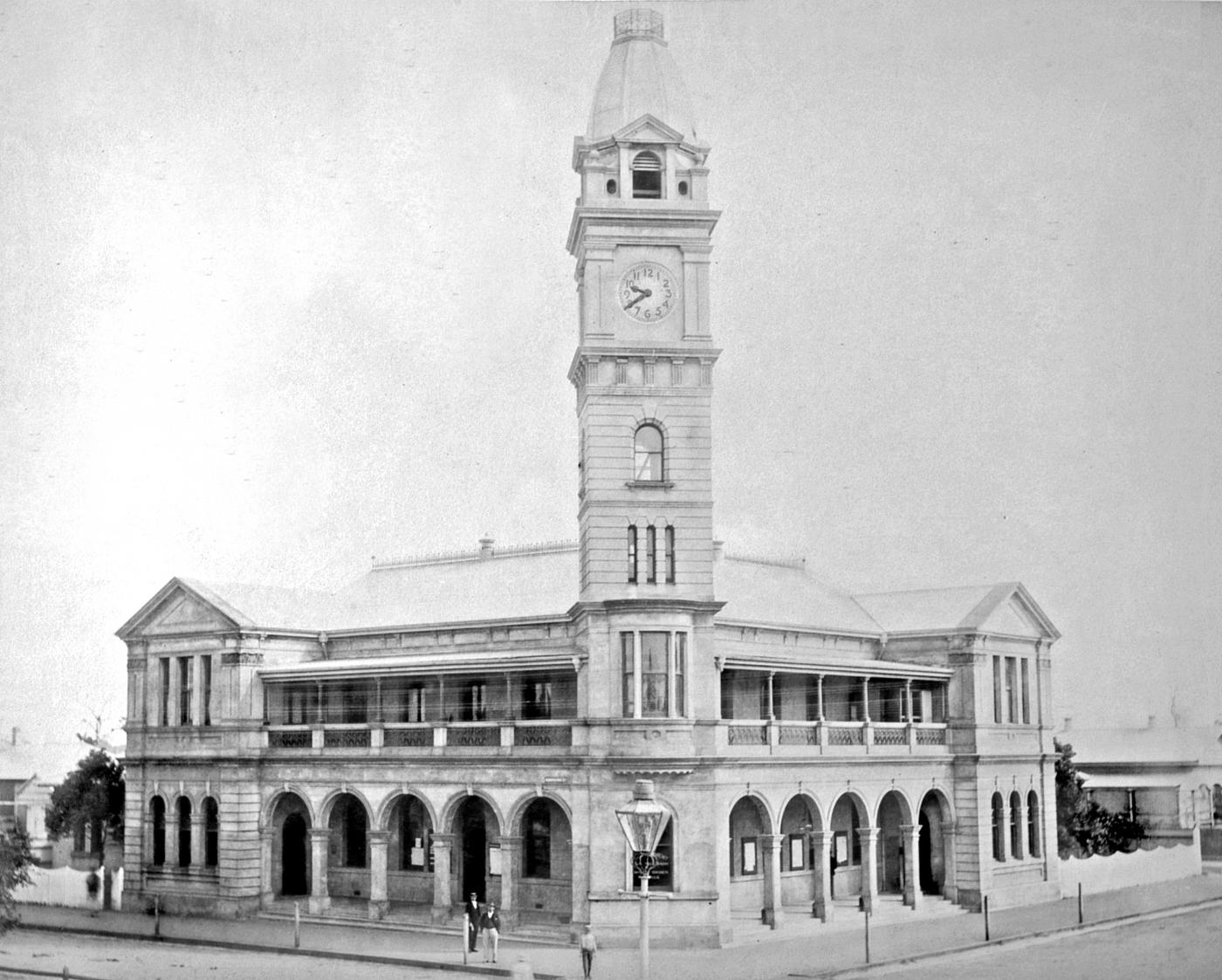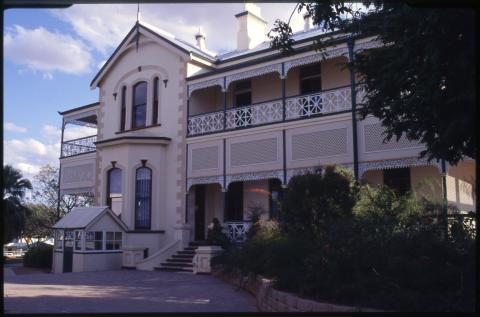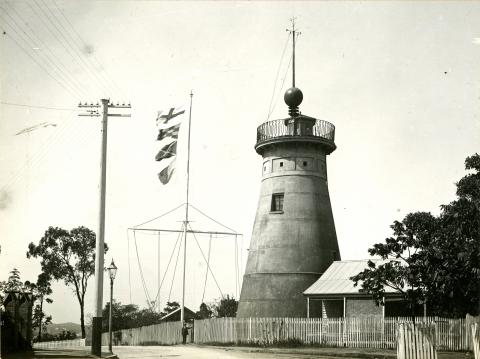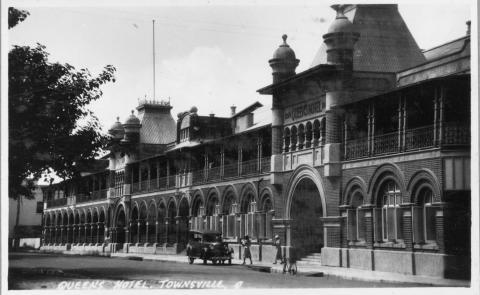
- News of the day
-
Maryborough Chronicle, Wide Bay and Burnett Advertiser,
BUNDABERG.
(FROM OUR OWN CORRESPONDENT)
Our postmaster is now occupying the new Post Office, and goodness knows it was time: being so long in course of erection, after it being completed and out of the hands of the contractor, the public were getting disgusted with so many delays. Any one having business at the new office cannot but be struck with its vast improvement on the old one, where the mail bags, if numerous, had to be stacked away in the chimney. The present office gives ample room to work the office comfortably and with despatch. In the telegraph department, the battery is on the north side of the building, where the operator can work and be out of the noise and bustle of all that visit the Post Office on a mail night. At the south side is a large room fitted with a counter the whole length, so that six persons can stand and write their messages without interfering with each other, which is the greatest boon the Bundaberg public have received for a long time, and great credit is due to our local post-master for the arrangements he has made; in fact, Mr. Smith seems never to tire of studying the interests of all having business with the office, whether telegraphic or postal.
- Background
-
Bundaberg Post Office, constructed in 1891 and incorporating a Crown Lands Department Office as well as offices of the French Cable Co., is significant as a large regional postal facility which is an integral part of the city’s historic central civic and administrative precinct, stemming from its rich history and wealth as one of Queensland’s great coastal ports. The substantial dual frontage and landmark tower embody a prosperity and future confidence in the city of Bundaberg which stemmed in large from the region’s importance to Australia’s sugarcane, mining and horticultural industries, exploited from the 1870s (Criterion a).
Typologically, Bundaberg Post Office built during 1890-1, belongs to the second generation of Australian post offices built between 1870 and 1929. These offices are generally assumed to incorporate separate components for the telegraph and postal functions in addition to quarters for the postmaster, and in this case integrated government offices. While the integrity and legibility of the original design in internal plan form has been somewhat diminished through alterations and additions, the building still demonstrates principal characteristics of the type including an accomplished application of style and endowment of monumental civic form; incorporation of frontal components such as offices, public spaces, clock tower, loggia and verandahs; and an increased size to reflect the increased volume of a rapidly developing region. Stylistically, the building’s Victorian Italianate frontages are a fine representative example of large post office buildings of the period. The building also departs from a squared or central corner clock tower with a single principal façade, typical of post office designs from the preceding couple of decades throughout Australia, to an angled corner feature flanked by equally weighted frontages. Bundaberg Post Office is also an example of the work of Charles McLay under the aegis of Queensland Colonial Architect, George Connolly (Criterion d).
Bundaberg is additionally valued as a large-scaled building with impressive dual street frontages on a busy principal intersection with a very high degree of landmark quality. This is principally due to its repetitious double-height loggia and verandah, screening both of the street elevations and the six level clock tower. It also shares an important civic precinct with the former Commercial Bank and the war memorial (Criterion e).
The curtilage includes the title block/allotment of the property.
The significant components of Bundaberg Post Office include the main postal building and clock tower dating from 1891. The single storey additions to both street frontages are of contributory significance.
Courtesy of the Australian Heritage Database
/152.3489488,-24.8660283,7/450x450@2x.png?access_token=pk.eyJ1IjoicXNhLWRpc2NvLXFsZCIsImEiOiJjamJmdTgyZXEyeWNjMnlxZm8xcmtieHgxIn0.lmT9J5tTPKGuuccQgCVSAg)



